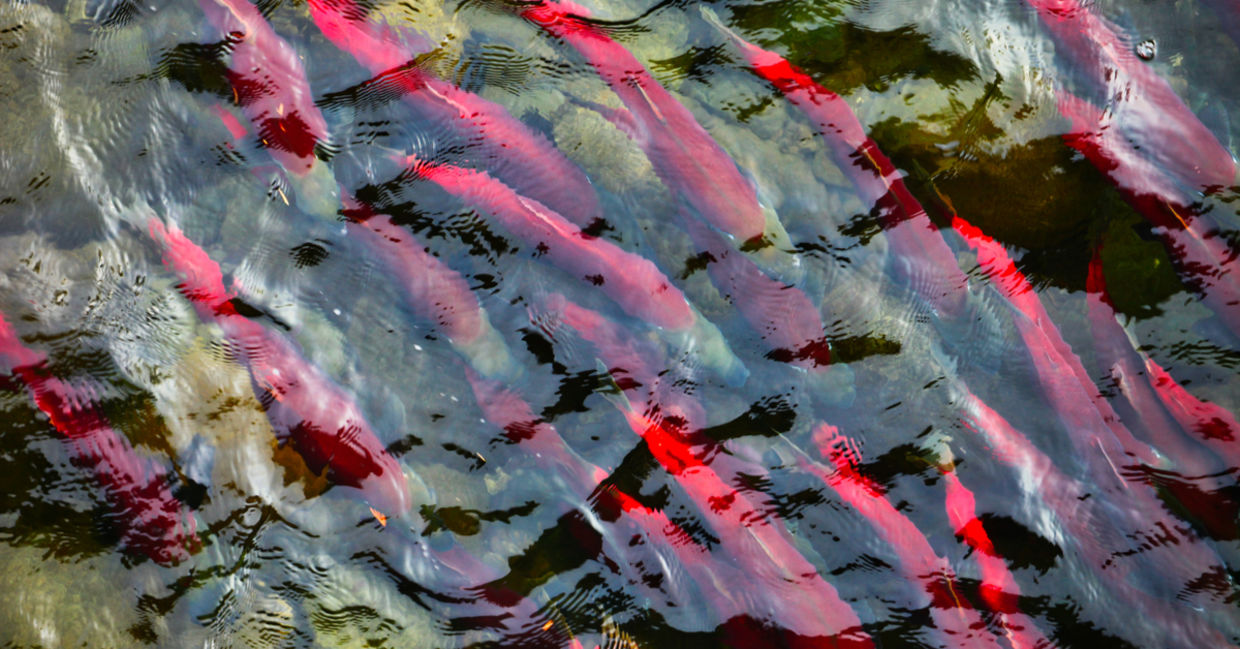
(Timothy Yue / Shutterstock.com)
After fifty years, the Okanagan Lake has once again become home to a long lost species — the sockeye salmon. A fish with a distinctive red color during spawning (it returns from the open sea a bright blue and silver hue), it is found in the Northern Pacific Ocean and the rivers discharging into it. Sockeye salmon were once native to this lake in British Columbia, Canada, although they had not been seen in it for five decades. Thanks to the combined efforts of government and community conservation groups, however, these fish are making a remarkable comeback!
Approximately 30,000 spawning salmon have now reached the Okanagan river basin after conservation efforts helped revitalize this aquatic region. According to Global News, the Okanagan Lake and nearby rivers were historically part of the sockeye salmon’s habitat until the Penticton Dam effectively blocked them from passing through the dam 50 years ago. This happened because the dam left an existing “fish ladder” inoperable”. A fish ladder, also called a fishway, provides a detour route for migrating fish to pass an obstruction on a river. It is made up of a series of ascending pools that are reached by swimming against a stream of water. Fish leap through the cascade of rushing water, rest in a pool, and then repeat the process until they are out of the ladder.
To rehabilitate the ecosystem and bring these native species back to their old stomping ground, the Okanagan Nation Alliance (ONA) and Fisheries and Oceans Canada built a new fish ladder to enable aquatic species to swim through the dam.
“The fish never made it this far. They only made it to McIntyre Dam in Oliver,” Herb Alex, the ONA’s hatchery equipment and facilities maintenance coordinator, told The Daily Courier.
“So all they’re doing is putting these little jumps in, and the fish can make their way up into the Okanagan” He said, referring to the ladder.
Sockeye salmon to return to Okanagan Lake for first time in over 50 years
— Climate Watcher Masked (@pmagn) October 28, 2019
For the first time since the Penticton dam was built in the 1950’s, sockeye salmon will return to Okanagan Lake. Shelby Thom reports.https://t.co/wsYFta5ilm
Efforts to restore the fish population have been in development for over twelve years, however, the completion of the new fish ladder marks an incredible feat, allowing the sockeye salmon easy passage to the lake where they spawn.
Or as local conservationist, Lee McFayden, movingly explained to Global News: “To watch that gate go up, and to know that the fish can finally return to their historic grounds, was a tearful moment.” McFayden is a member of the Okanagan River Restoration Initiative (ORRI) and the Okanagan Similkameen Conservation Alliance (OSCA).
Conservation groups, backed by pubic bodies and other stakeholders have also built spawning beds out of a unique gravel that mimics the fish’s natural spawning grounds.
According to ORRI’s website “The spawning beds provide public viewing salmon spawning opportunities, and improve the global health of the Penticton channel by reducing invasive exotic species abundance.” The newly hatched sockeye salmon migrate to the ocean via regional rivers, and return back again to the lake as part of a 6,000 kilometer journey.
McFayden explained that beyond maintaining a healthy aquatic ecosystem, and being an important part of the First Nations (North American indigenous peoples) culture, the repopulation of sockeye salmon also directly benefits other animals in the region who feed off them as a primary food source, such as bears and eagles.
“In the entire Columbian system, the Okanagan River is the only river left that spawns sockeye and that’s monumental when you think about it.” McFayden told Kelowna Capital News.
YOU MIGHT ALSO LIKE:
Found in Florida: A Blue Bee Thought to be Extinct!
Celebrating a New Dolphin Prototype That May Just Change History
Canada Clears the Way for Salmon







